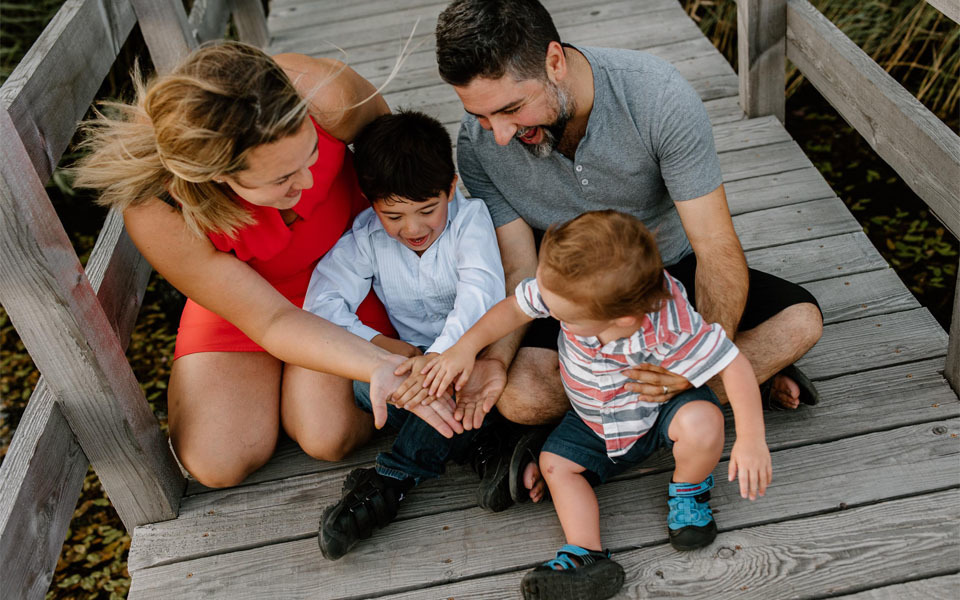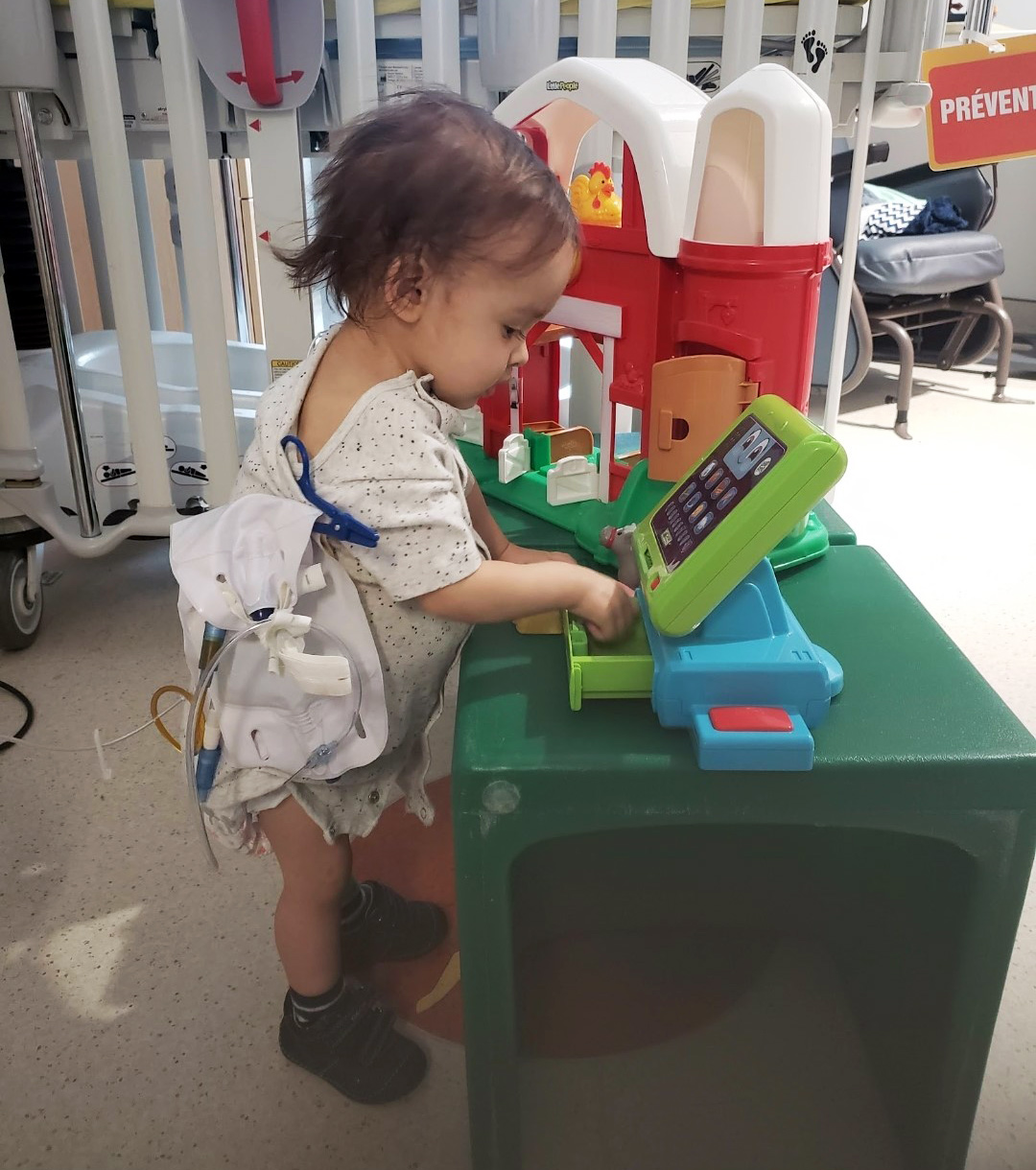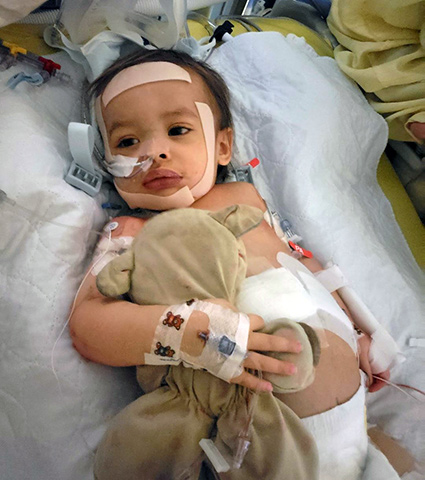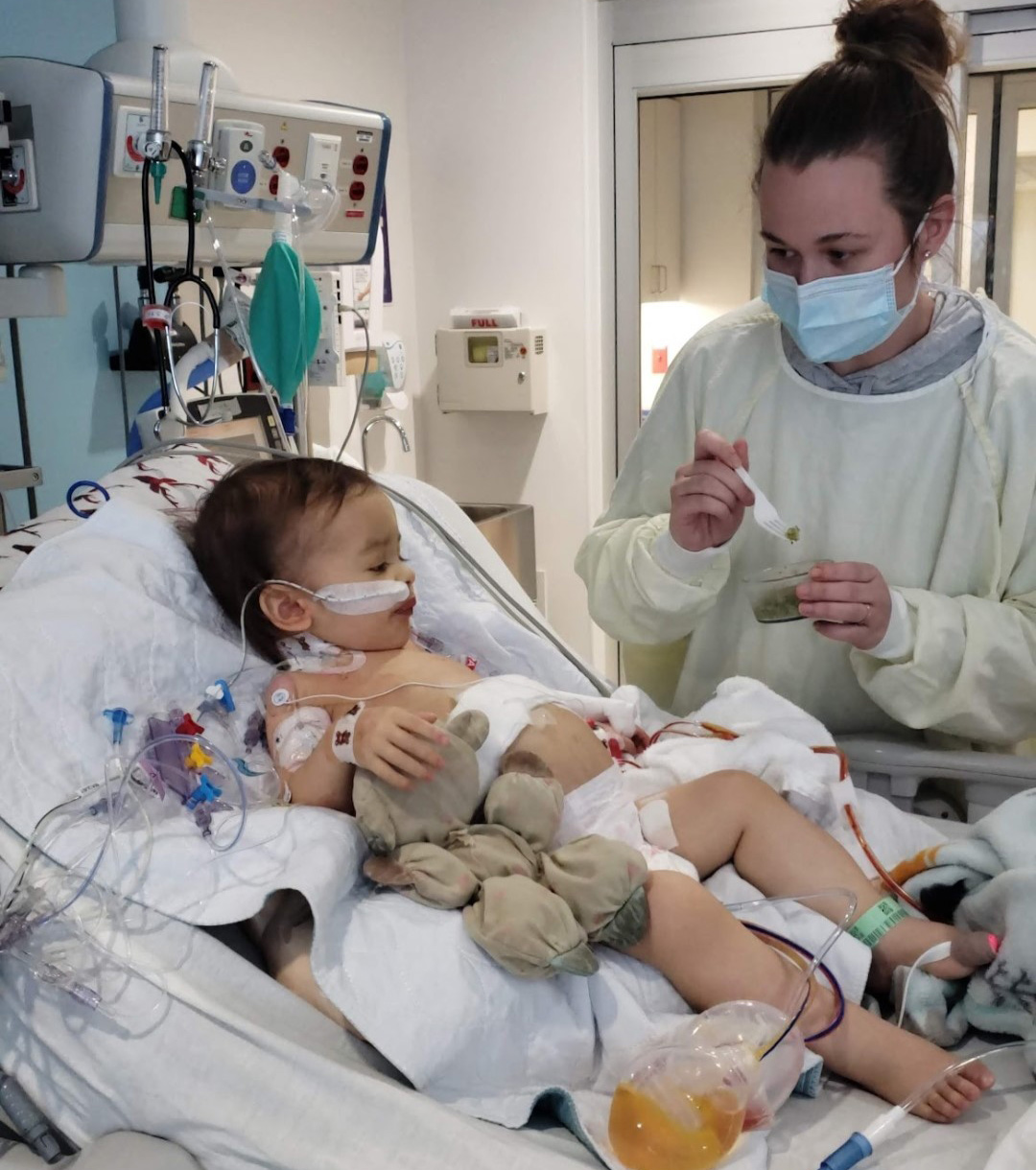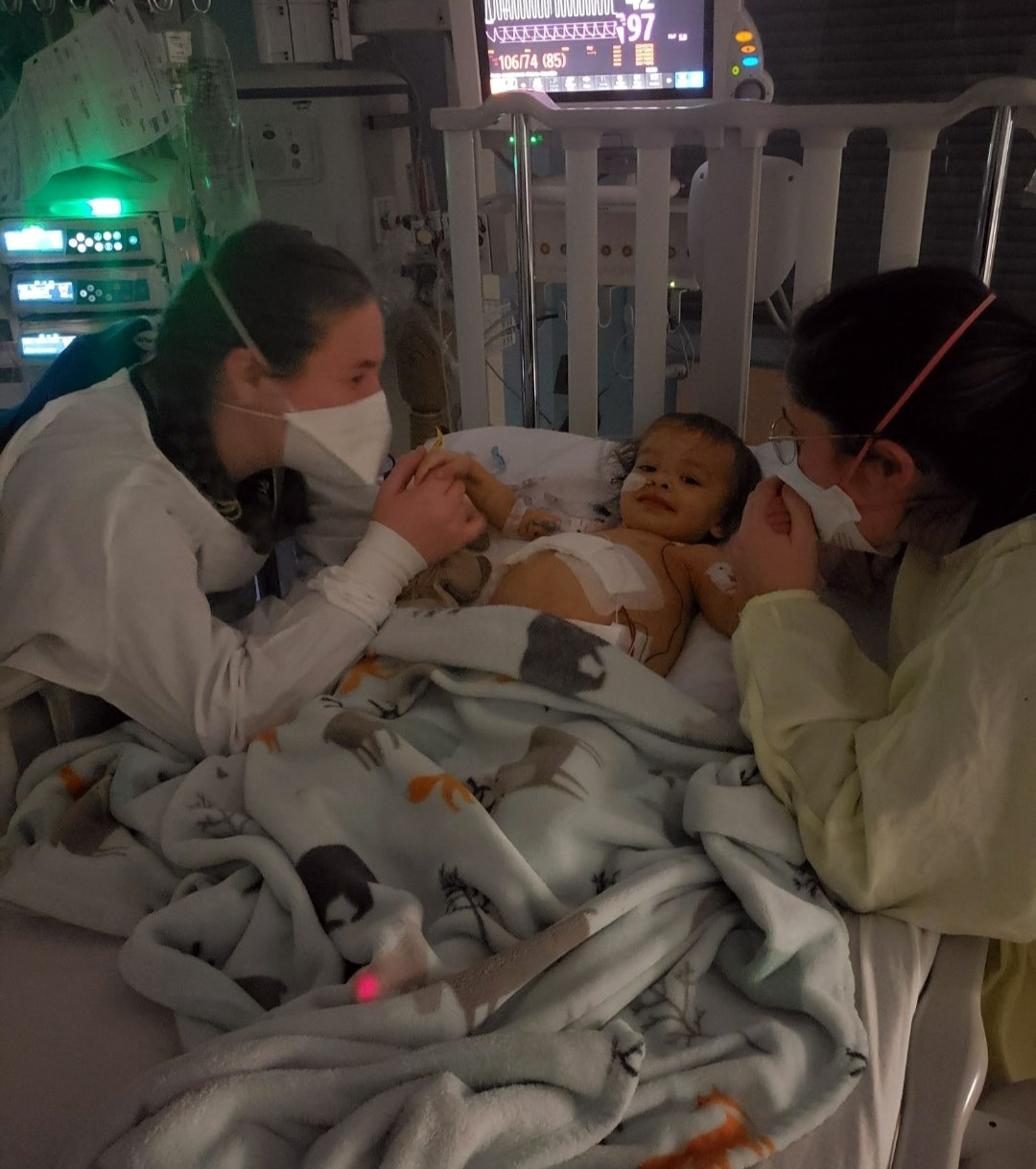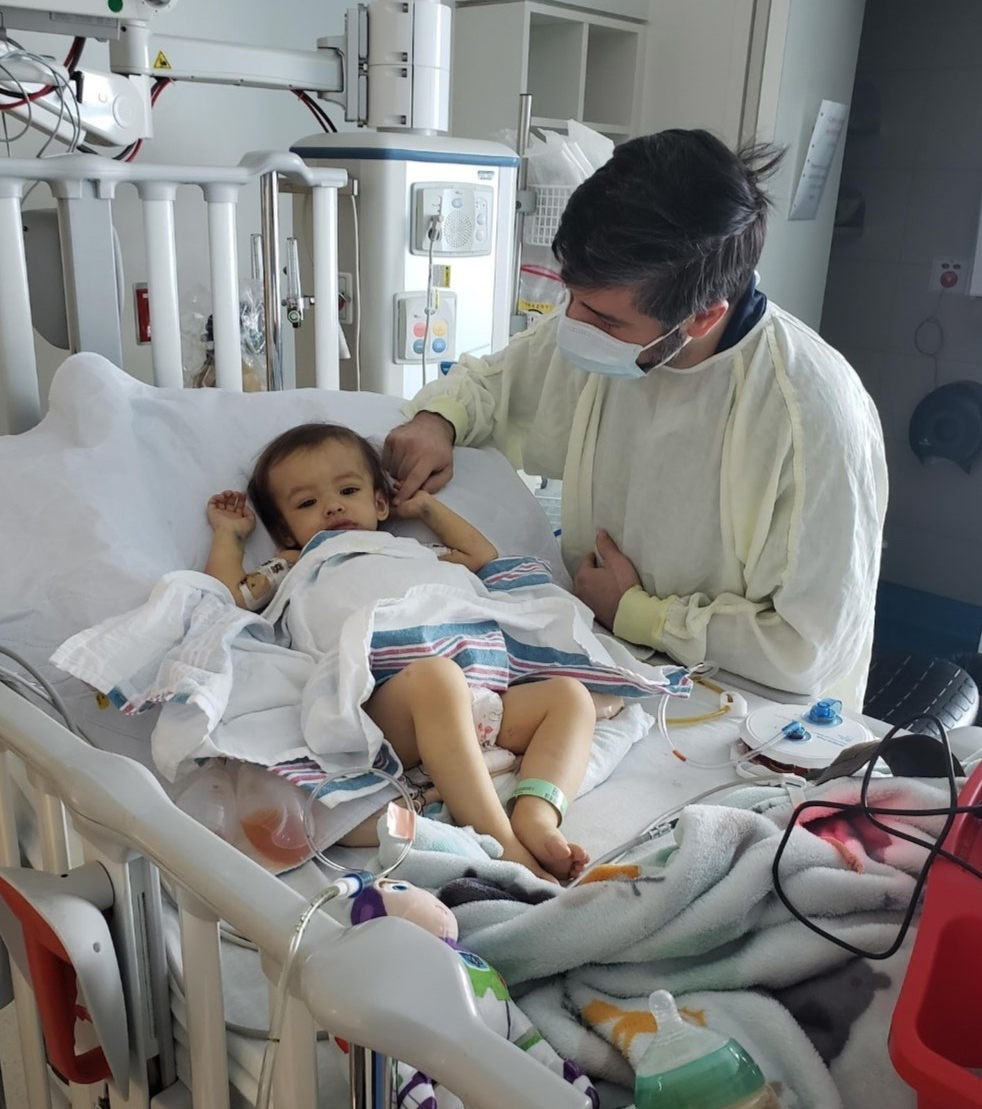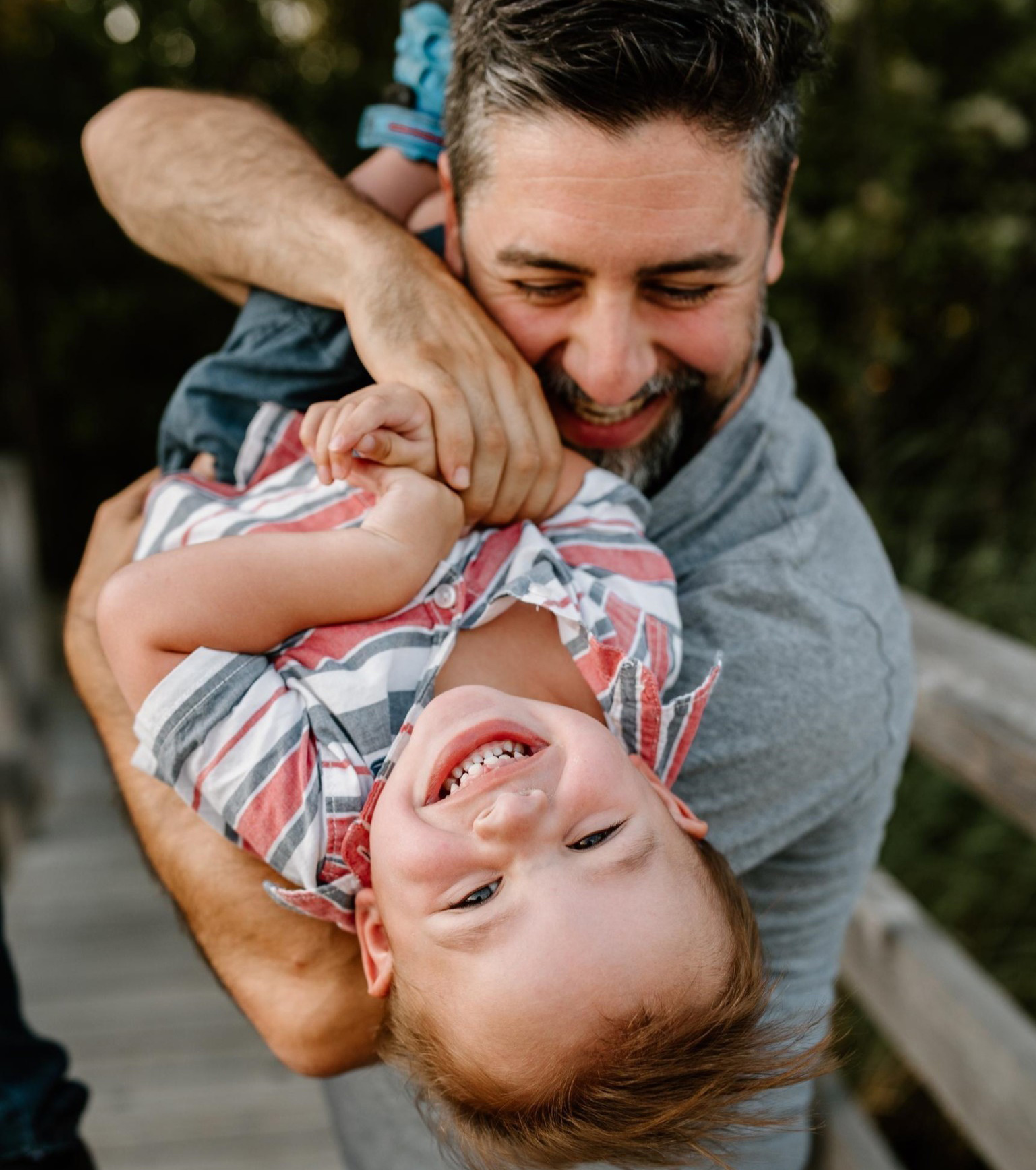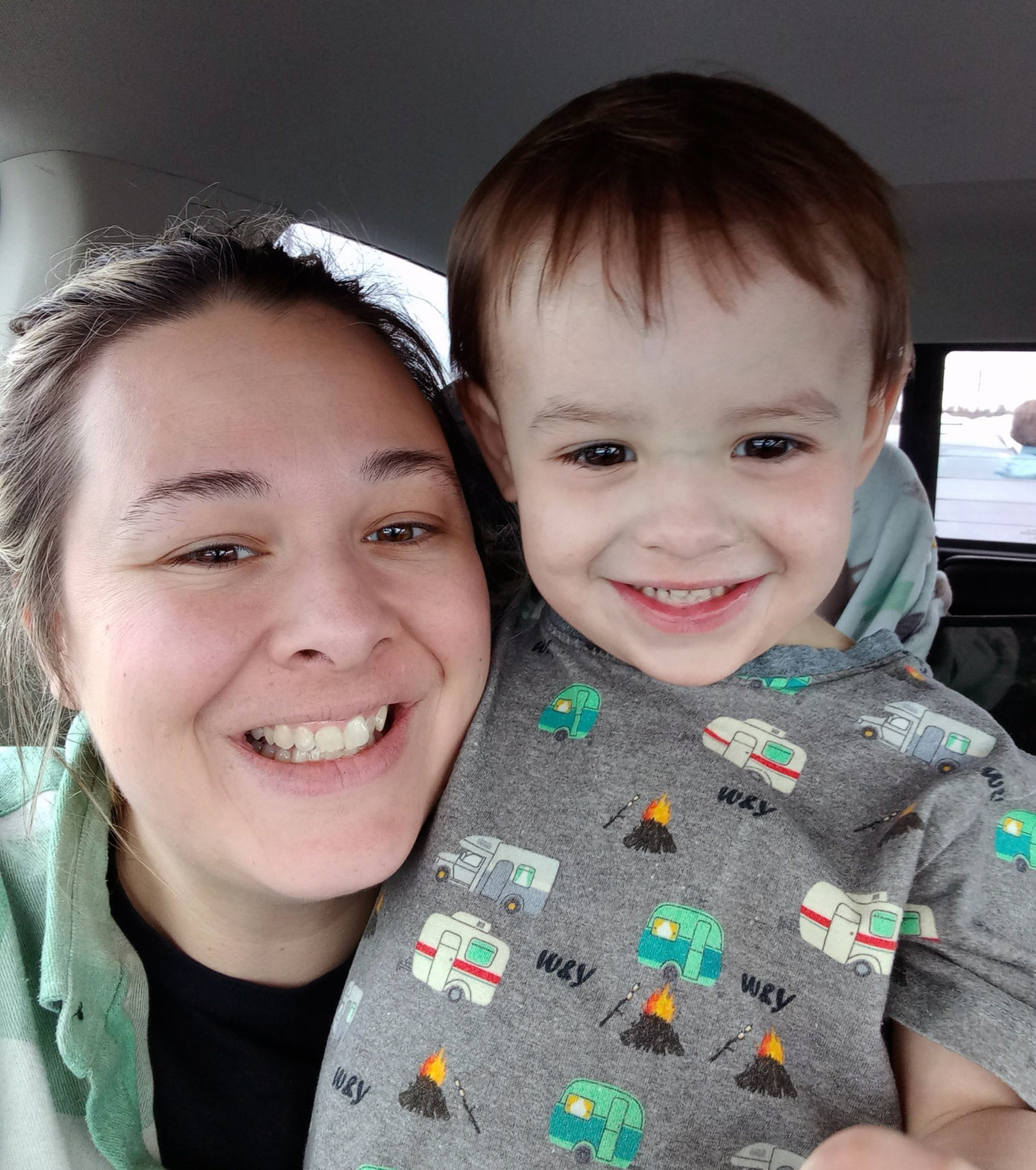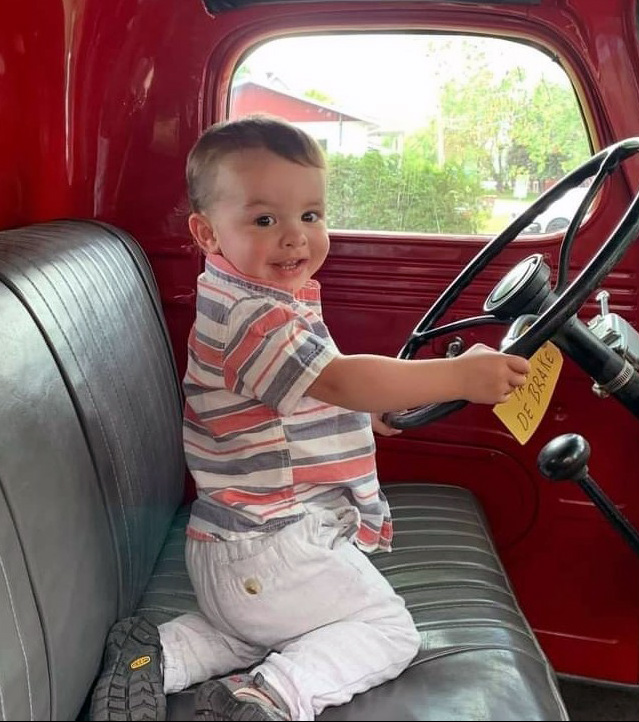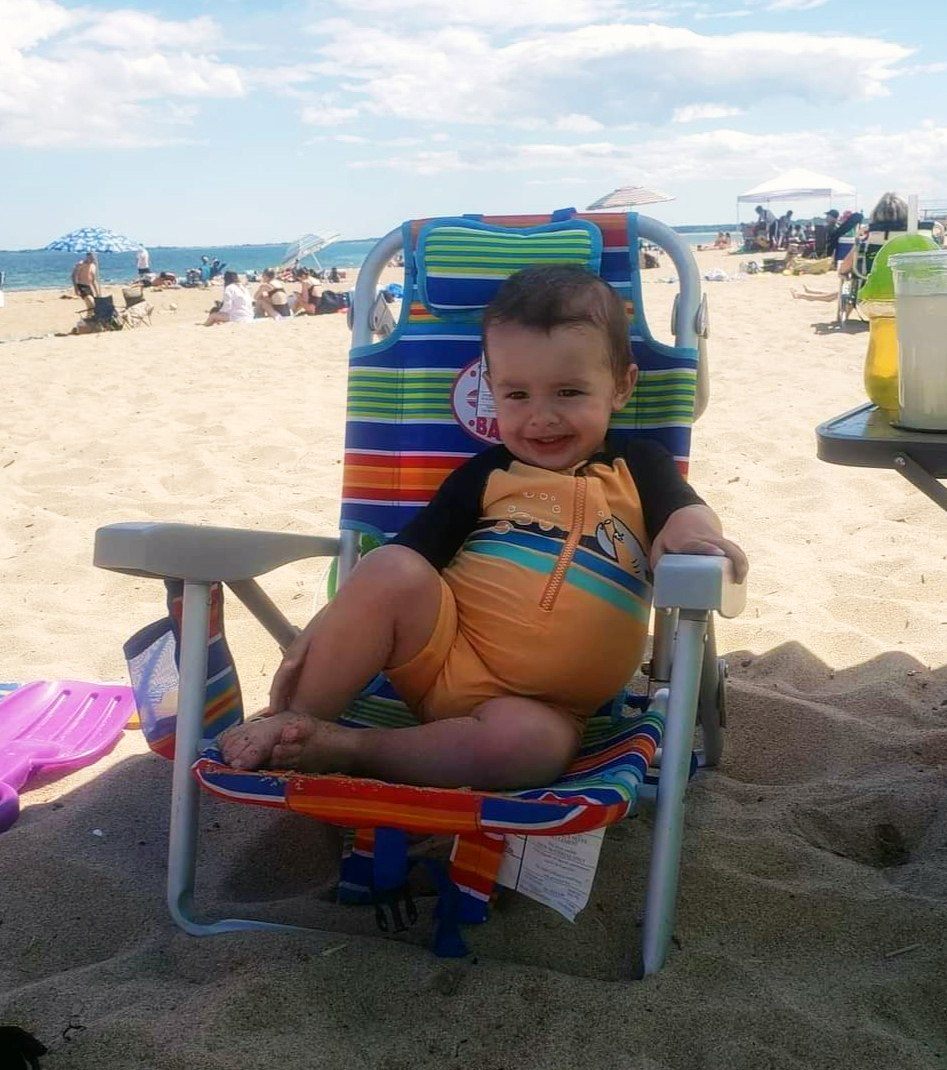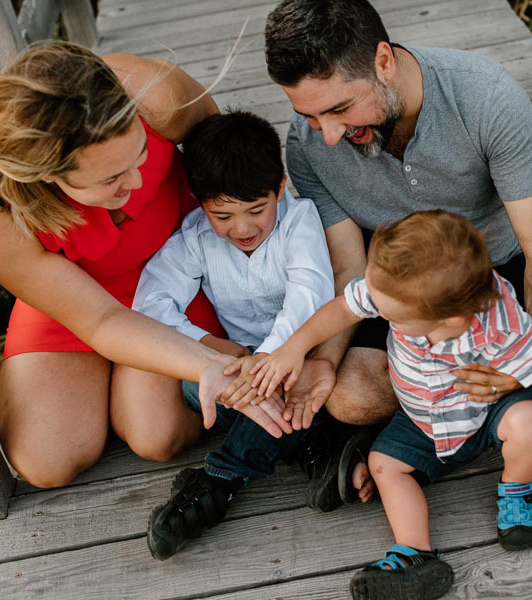Michael would give his life for his children. One year ago, he donated a portion of his liver to save his son Charly. For them, Sainte-Justine means love with a capital L. It means being part of a big family that’s by your side through both the darkest nights and the brightest days.
In December 2019, 6-month-old Charly’s abdomen felt abnormally firm. His pediatrician was concerned about his liver function, so Charly was sent to Sainte-Justine, where he underwent a series of diagnostic tests.
“Our oldest had never been to the hospital, so when Charly was admitted, we were totally out of our depth. We had a pretty normal, average life, and then suddenly, dozens of specialists were trying to figure out what was wrong with our smiley little baby.” – Noémie Trottier and Michael Lussier, parents of Charly and William
Dr. Fernando Alvarez, a gastroenterologist at CHU Sainte-Justine, suspected glycogen storage disease type IV, a rare disorder that affects the liver. As his condition was stable, the little boy remained under observation, but could go home.
In November 2021, Charly was struggling to recover from a common infection and his belly was getting bigger. Sainte-Justine medical staff noticed that his albumin levels had plummeted, a sign of poor liver function. They had to face facts: Charly needed a new liver.
A life-saving operation
Transplant nurse Stéphanie Dion developed a special bond with the family, as she was with them every step of the way. First, tests were performed to determine whether Charly could receive the transplant. The parents and care team weighed the options and decided on a living donation from Charly’s father, Michael, who was a compatible donor.
In preparation for the transplant, Charly was given blood and albumin transfusions once or twice a week for almost three months, with every session lasting three hours.
On February 1, 2022, Michael had a portion of his liver removed by pediatric surgeon Dr. Michel Lallier at the Centre hospitalier de l’Université de Montréal (CHUM). During the drive to Sainte-Justine, the doctor called Charly’s mother, Noémie, who remembers his words to this day:
The surgery was successful. We’re coming to save your baby!
That day, Charly became Sainte-Justine’s first transplant recipient of the year. Nearly two liters of fluid were also removed from his belly during the operation. The little boy returned home after a month in hospital, including two weeks in intensive care.
We had an amazing team supporting us through this difficult time. They explained everything clearly, reassured us, and helped us make the right choices for our son. We are incredibly grateful to the Sainte-Justine nursing staff and its community of donors.
A new lease on life
Now, more than a year after his transplant, Charly is doing great! He joins his family on camping trips and walks and loves trying new things. In short, he’s enjoying just being a kid again.
“I always say that the day Charly had his transplant, it was like he came back to life. Before, we had a child who couldn’t walk even at 18 months because his belly was too big. He was tired all the time. Now we have a rambunctious little rug rat who’s always jumping around and full of energy!” – Noémie Trottier
Charly’s parents are also amazed at how close their two children have become. “When Charly was sick, I think William was afraid to interact with him too much. Charly’s condition made it hard for them to bond. But since the transplant, they’ve gotten really close and are constantly bickering. They’re a couple of little terrors,” laughs Noémie.
To show their appreciation for Sainte-Justine’s care teams and donors, Charly’s family will act as ambassadors for the 36th edition of the Cachou Tournament, the CHU Sainte-Justine Foundation’s flagship spring event. The goal is to raise the $2 million that Sainte-Justine needs to continue to provide the best possible care to children and families across Quebec, just as it did for Charly.
Your donations help keep hope alive by allowing the teams at CHU Sainte-Justine to remain on the cutting edge of technology, break new ground, and carry out research in all areas of pediatric health.
Together, we can pursue this important mission and contribute to the betterment of our society.


